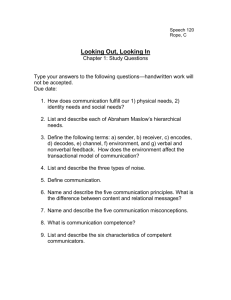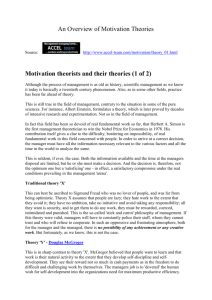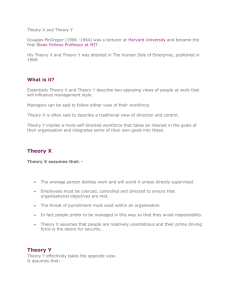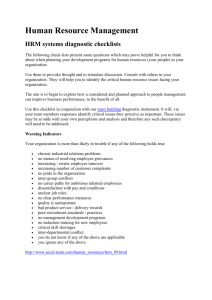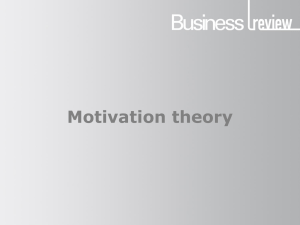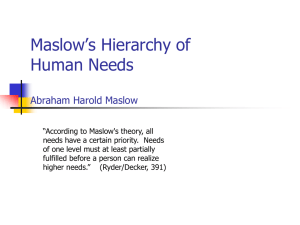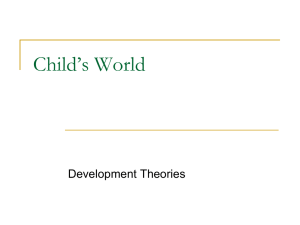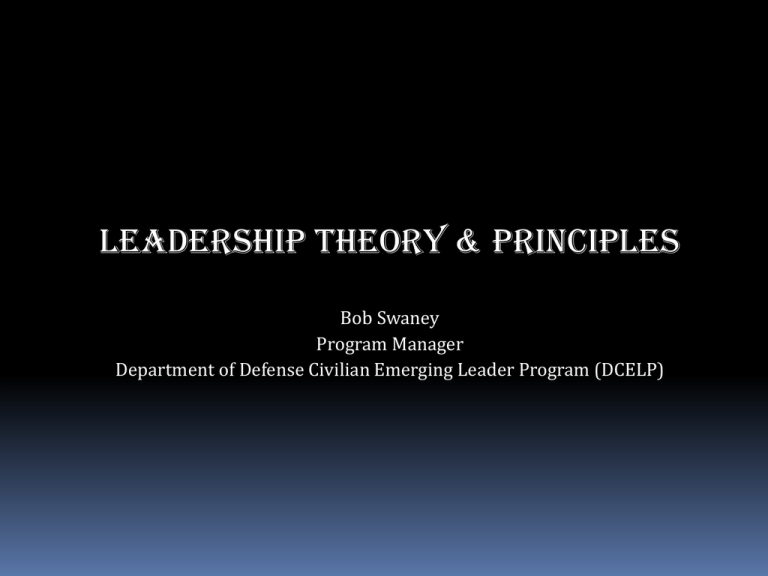
LEADERSHIP theory & PRINCIPLES
Bob Swaney
Program Manager
Department of Defense Civilian Emerging Leader Program (DCELP)
YOU/ YOUR LEADER AND
YOUR SUBORDINATE
BEHAVIOR
WHY DO WE OR OUR SUBORDINATES
BEHAVE THE WAY THEY DO?????
NEED
BEHAVIOR
GOAL
LEADERSHIP THEORY AND
PRINCIPALS
Cognitive
Domain
(Thinking)
(Being)
Courage
Domain
(*Moral and
Physical)
(Doing)
COMPASSION
Domain
(Feeling)
LEADERSHIP theory &
PRINCIPLES
Leadership theories and Leaders of some sort or
another are necessary; as long as there have been
people, there have been leaders and ideas about
what made them exceptional.
"Leadership is ultimately about creating a way for
people to contribute to making something
extraordinary happen."
Let’s take a look at some of history's most influential
leaders
MILITARY Leaders Past &
Present
JULIUS CAESAR
ATTILA THE HUN
NAPOLEON BONAPARTE
General George Patton
General Douglas
McArthur
General Colin Powell
Leaders WHO OFFERED HOPE
Abraham Lincoln
Martin Luther King
John F. Kennedy
Leaders WHO CHANGED THE
WORLD
#1. Jesus Christ
(c.5BC - 30AD)
Spiritual Teacher,
central figure of
Christianity
#5. Nelson Mandela
(1918 - ) Anti-apartheid
leader. First President
of democratic South
Africa in 1994
DATA PROVIDED BY:
# 39 Mother Teresa
Mother Teresa (1910-1997) - Nun
who served the poor
Leaders WHO CHANGED THE
WORLD
In Oct. 2011, Steve Jobs passed away at
the age of 56
Leaders WHO TRIED TO DESTROY
THE WORLD
Fidel Castro
ADOLF HITLER
Osama-Bin-Laden
For nearly five decades
the leader of the only
communist country in
the Western
Hemisphere
Woman Leaders from the Past
Clara Barton
Founder of the
American Red
Cross
Susan B. Anthony
Leader of Woman's
Rights
Condoleezza Rice
The first AfricanAmerican woman
Secretary of State
WOMAN Leaders Present
Michelle Obama
THE First Lady
Hillary Clinton
Secretary of State
The Most Powerful Woman
leader in the World as
Ranked by Forbes Magazine
Angela Merkel
Chancellor of Germany
Leaders who tried to make a
difference
George W Bush
WHO WILL BE
NEXT????
Barack Obama
Leader I have had the
privilege of knowing
Michael Ilitch - owner and director
of the Detroit Tigers and the
Detroit Red Wings……AND
LITTLE CAESARS PIZZA (PIZZA PIZZA)
NET WORTH ---2 BILLION AND SOME CHANGE
ALSO MY NEXT DOOR NEIGHBOR’S
DAD
LEADERSHIP theory &
PRINCIPLES
Over the next few minutes we will discuss in
detail the following Theories and Principles
Some you may have seen and discussed
before and some not so much
Here are just a few of the “Models” and
“Graphs” and those, who created them, that
we will discuss
Maslow’s HierarcHy of Needs
Abraham Harold Maslow (April 1, 1908 – June 8, 1970) He created
Maslow hierarchy of needs. He stressed the importance of focusing on
the positive qualities in people, as opposed to treating them as a “bag of
symptoms”
LEADERSHIP theory & PRINCIPLES
Self-actualization
personal growth and fulfillment
Esteem needs
achievement, status, responsibility, reputation
Belongingness and Love needs
family, affection, relationships, work group, etc
Safety needs
protection, security, order, law, limits, stability, etc.
Biological and Physiological needs
basic life needs - air, food, drink, shelter, warmth, sex, sleep, etc.
Abraham Maslow’s
Hierarchy of Needs.
MCGREGOR THEORY X & THEORY Y
Douglas Murray McGregor (1906–1964)
"...he coined the two terms Theory X and Theory Yand used them to
label two sets of beliefs a manager might hold about the origins of
human behavior
LEADERSHIP theory & PRINCIPLES
Douglas McGregor’s
Leadership Motivation Theory
X and Y
Motivation Theory X
A Theory X manager makes the following
general assumptions:
Work is inherently distasteful to most people,
who will attempt to avoid work whenever
possible.
Most people are not ambitious, have little
desire for responsibility, and prefer to be
directed.
THeory “y” ParTiciPaTive
Management Style
Effort in work is as natural as work and play.
People will apply self-control and self-
direction in the pursuit of organizational
objectives, without external control or the
threat of punishment.
Commitment to objectives is a function of
rewards associated with their achievement.
THeory “y” ParTiciPaTive
Management Style
People usually accept and often seek
responsibility.
The capacity to use a high degree of
imagination, ingenuity and creativity in
solving organizational problems is widely, not
narrowly, distributed in the population.
LEADERSHIP theory & PRINCIPLES
Blake and Mouton Leadership
Grid
Motivator-Hygiene Theory =
Satisfiers and Dissatisfies
He distinguished between:
Motivators; (e.g. challenging work, recognition,
responsibility) which give positive satisfaction, and
Hygiene factors; (e.g. status, job security, salary
and fringe benefits) that do not motivate if
present, but, if absent, result in demotivation.
The name Hygiene factors is used because, like
hygiene, the presence will not make you healthier,
but absence can cause health deterioration.
Motivator-Hygiene Theory =
Satisfiers and Dissatisfies
By considering Herzberg's two factor theory,
you can work out what dis-satisfies your
team, what motivates them and most
importantly, what you can do to increase job
satisfaction
Thank You for the
opportunity
Now……GO OUT and LEAD,
FOLLOW or GET OUT OF WAY
Questions



